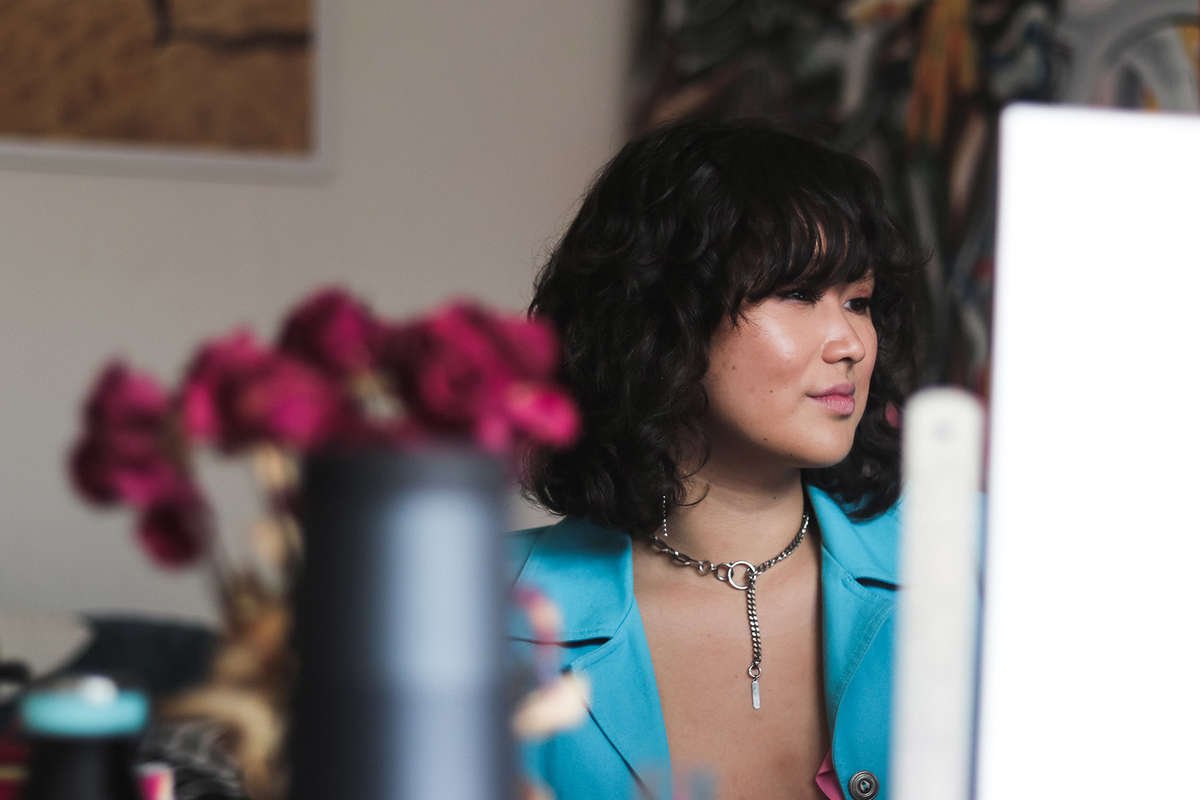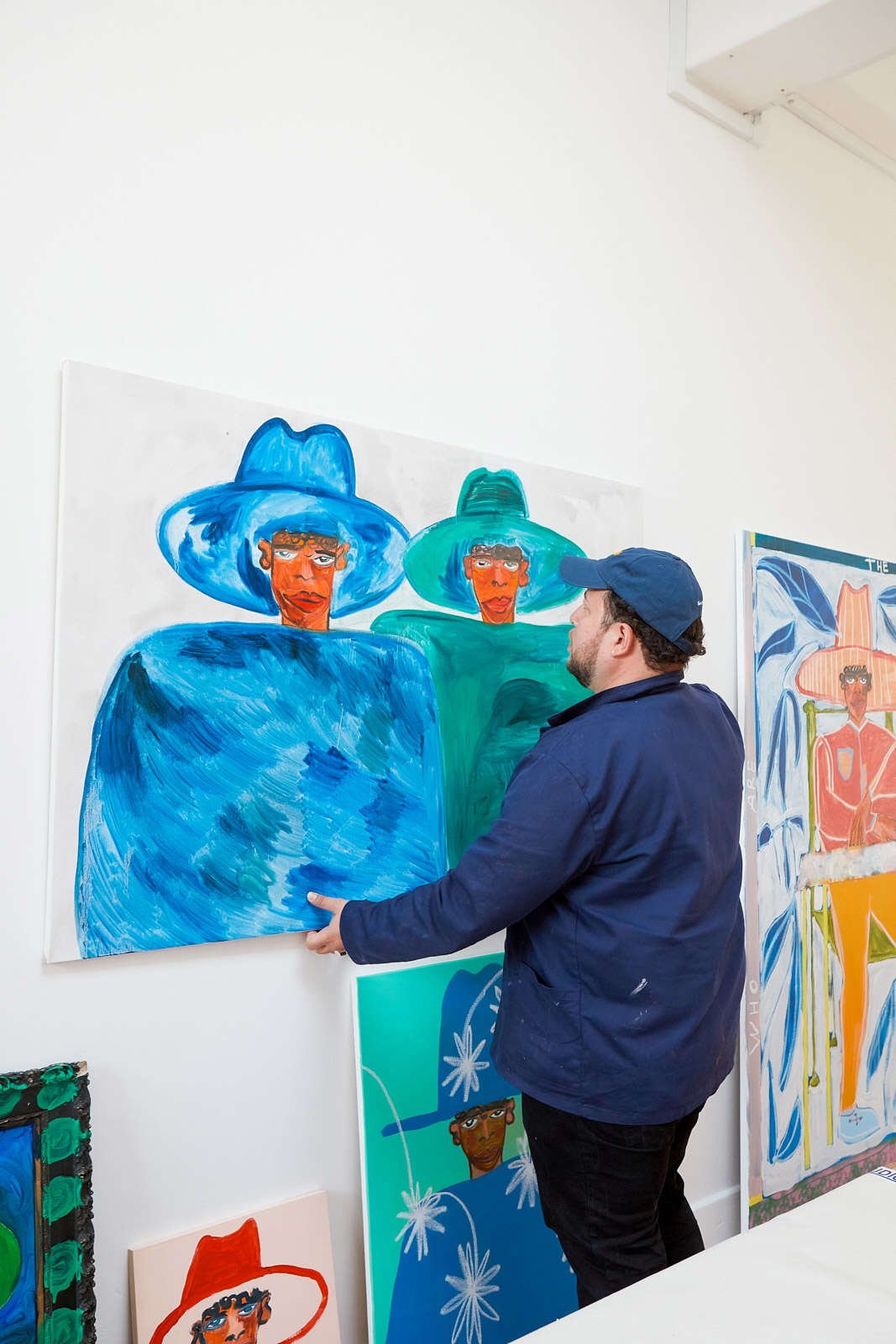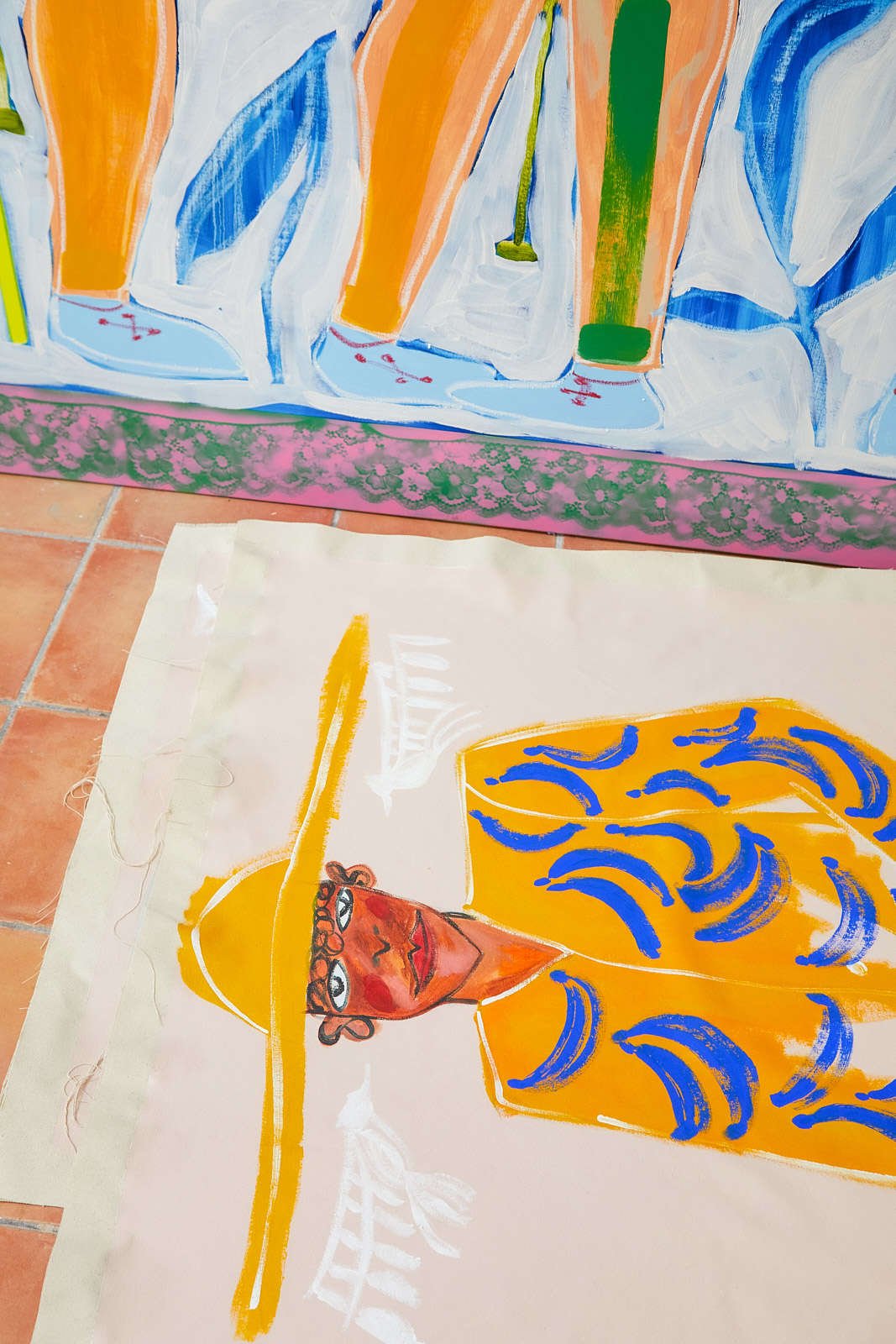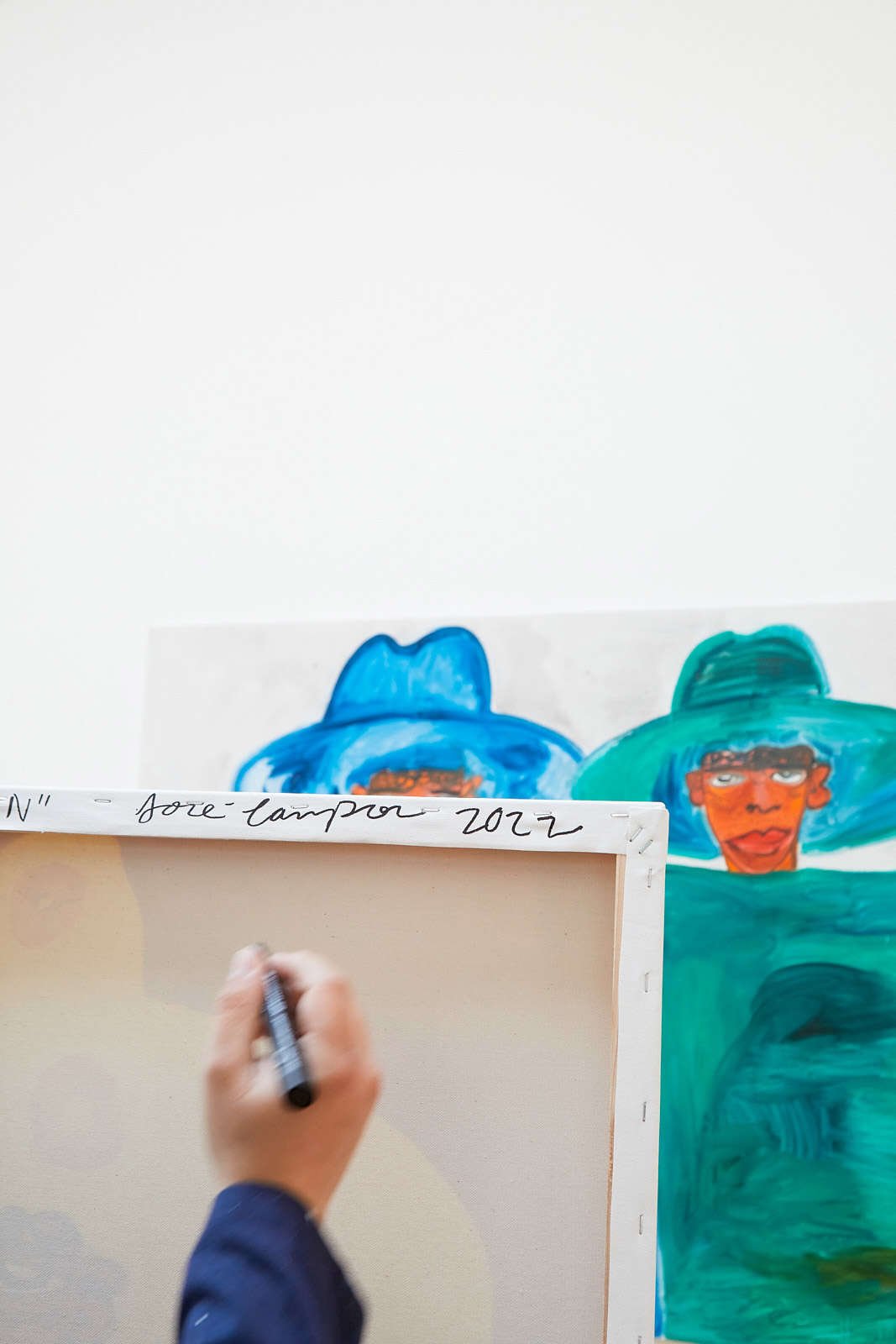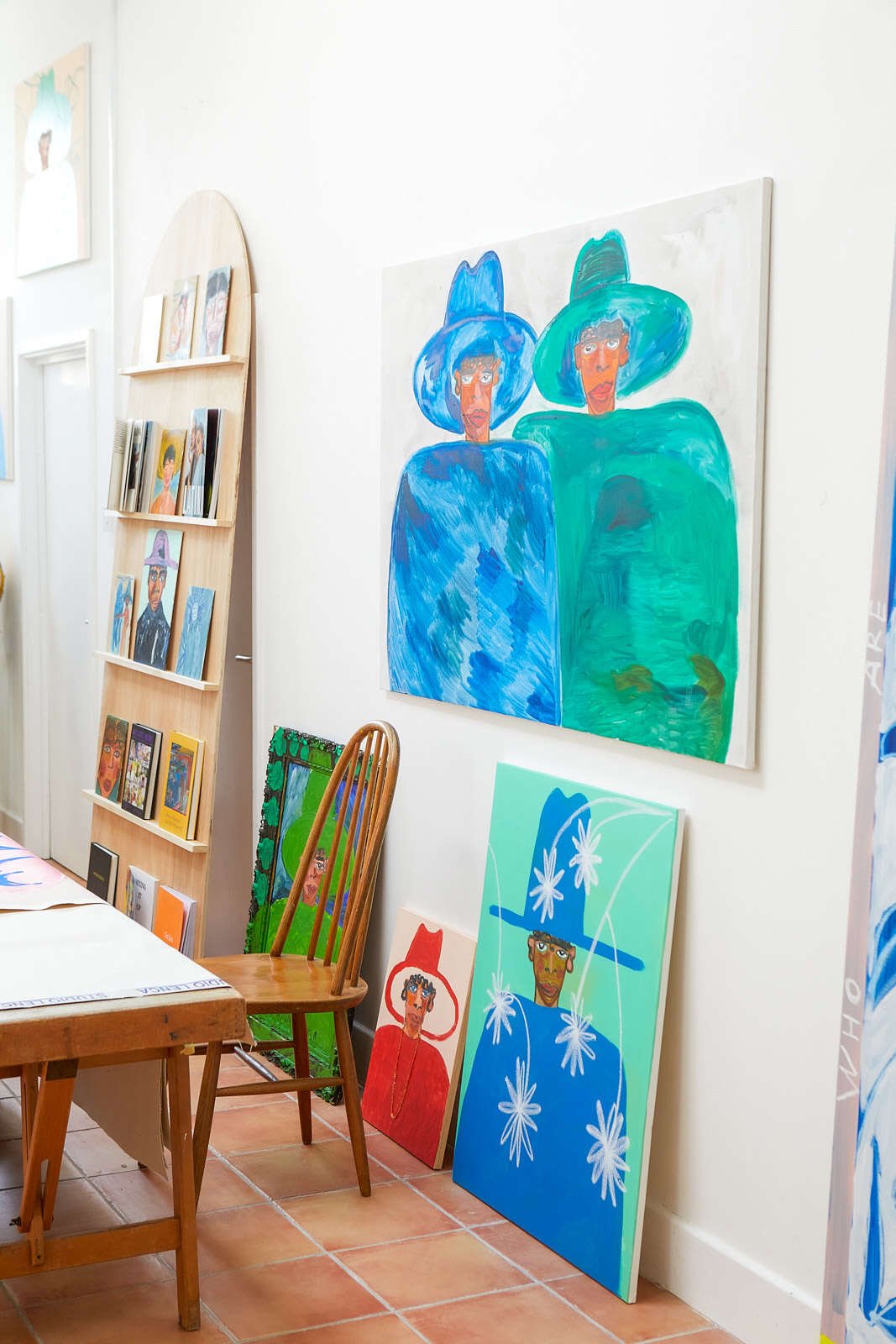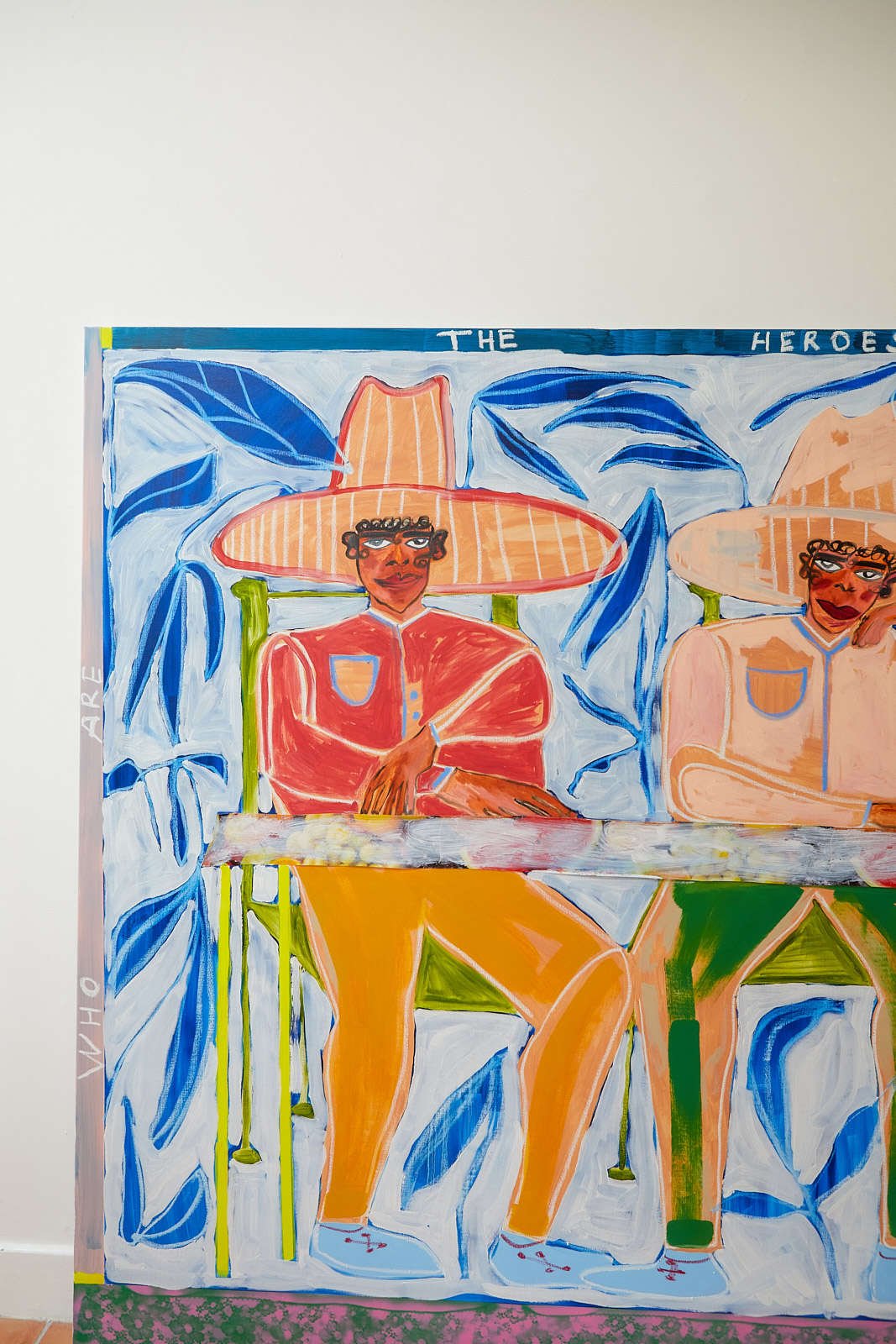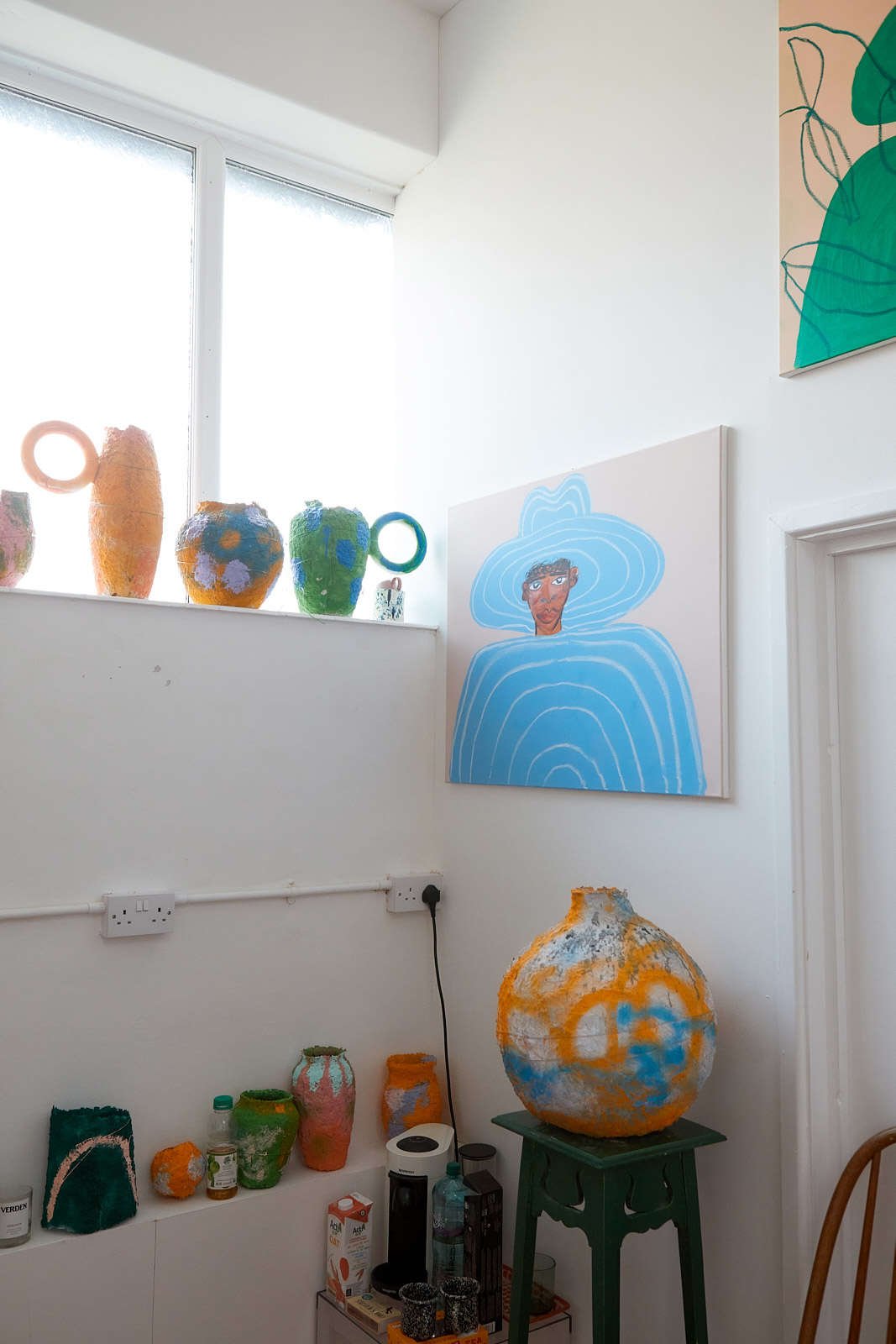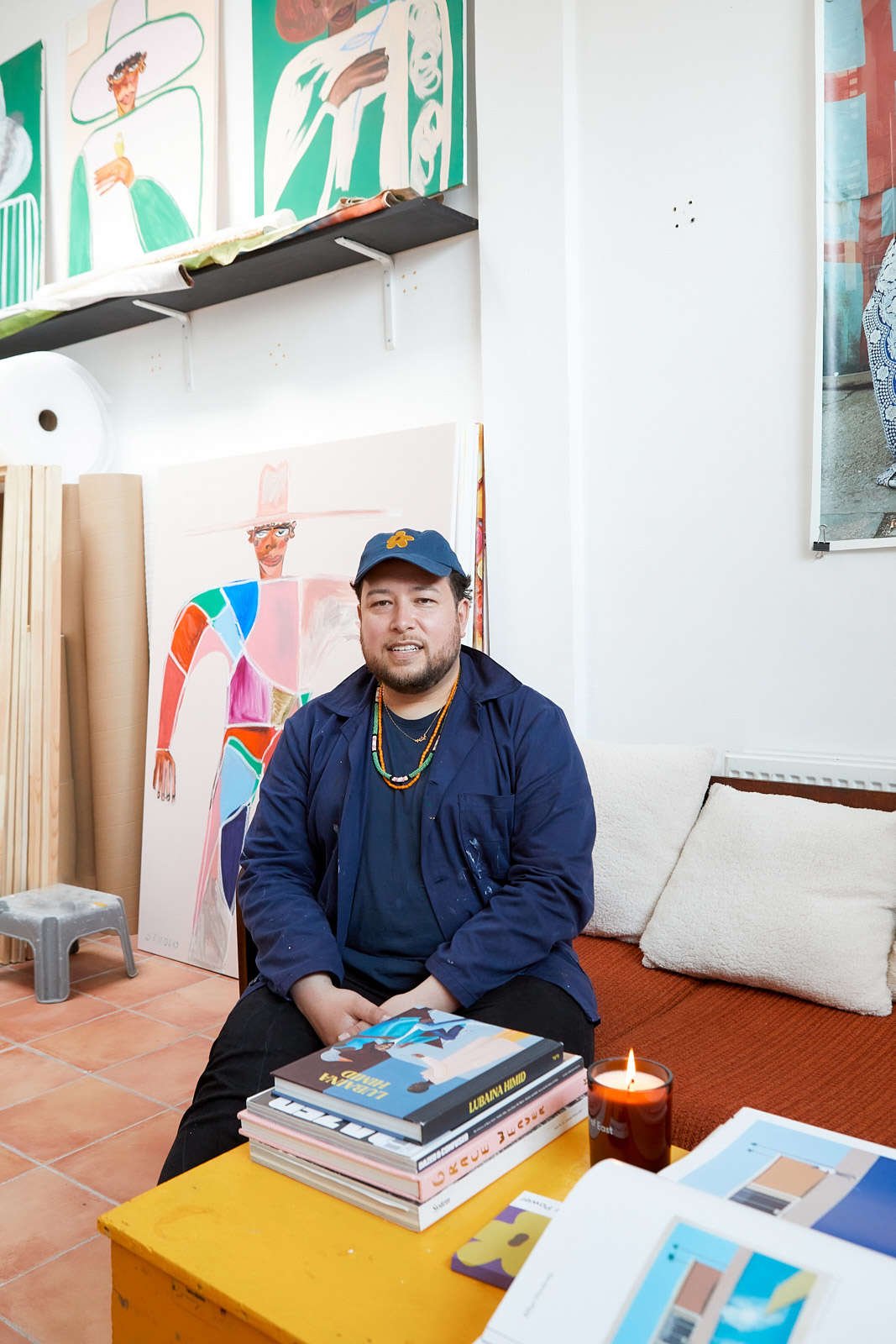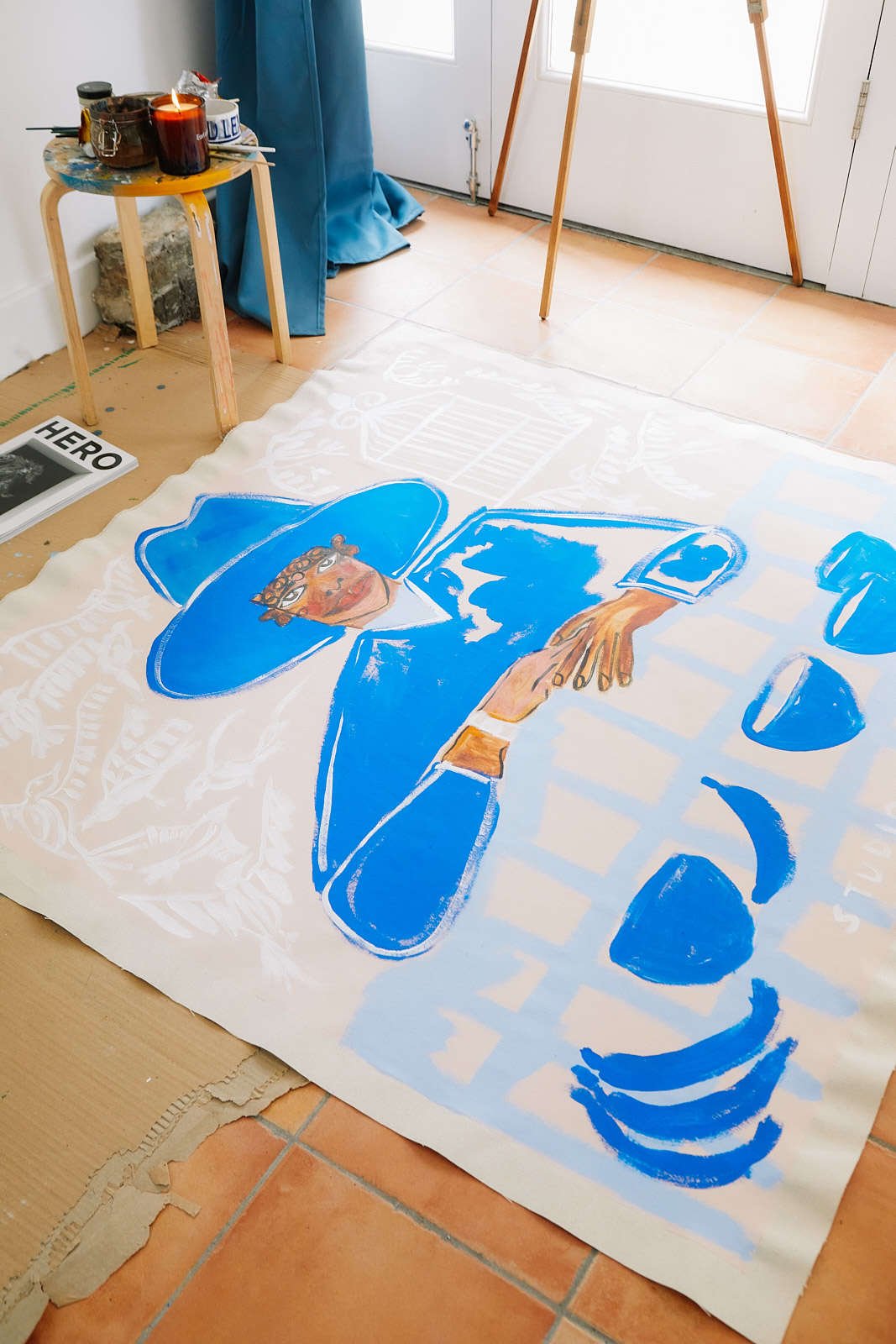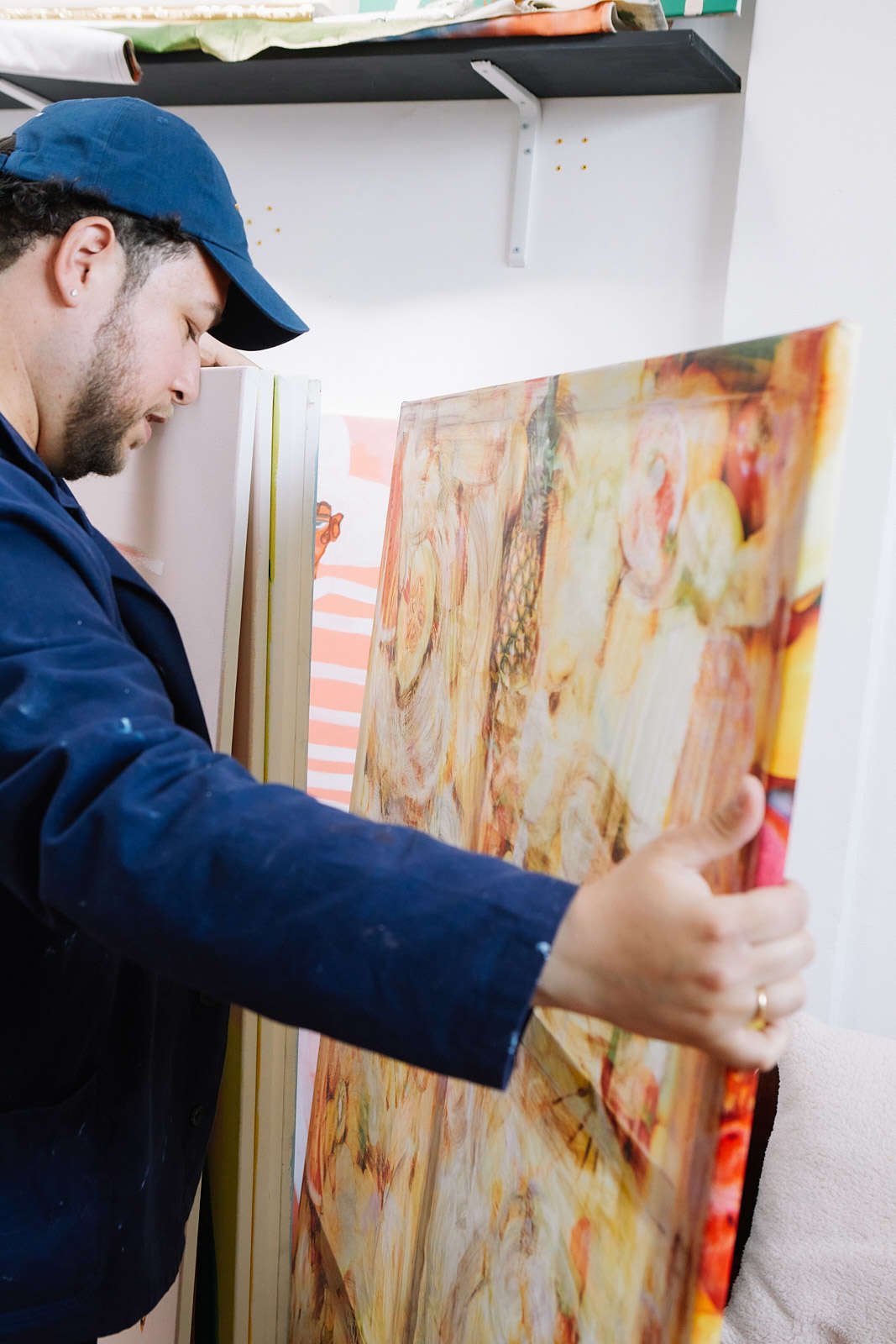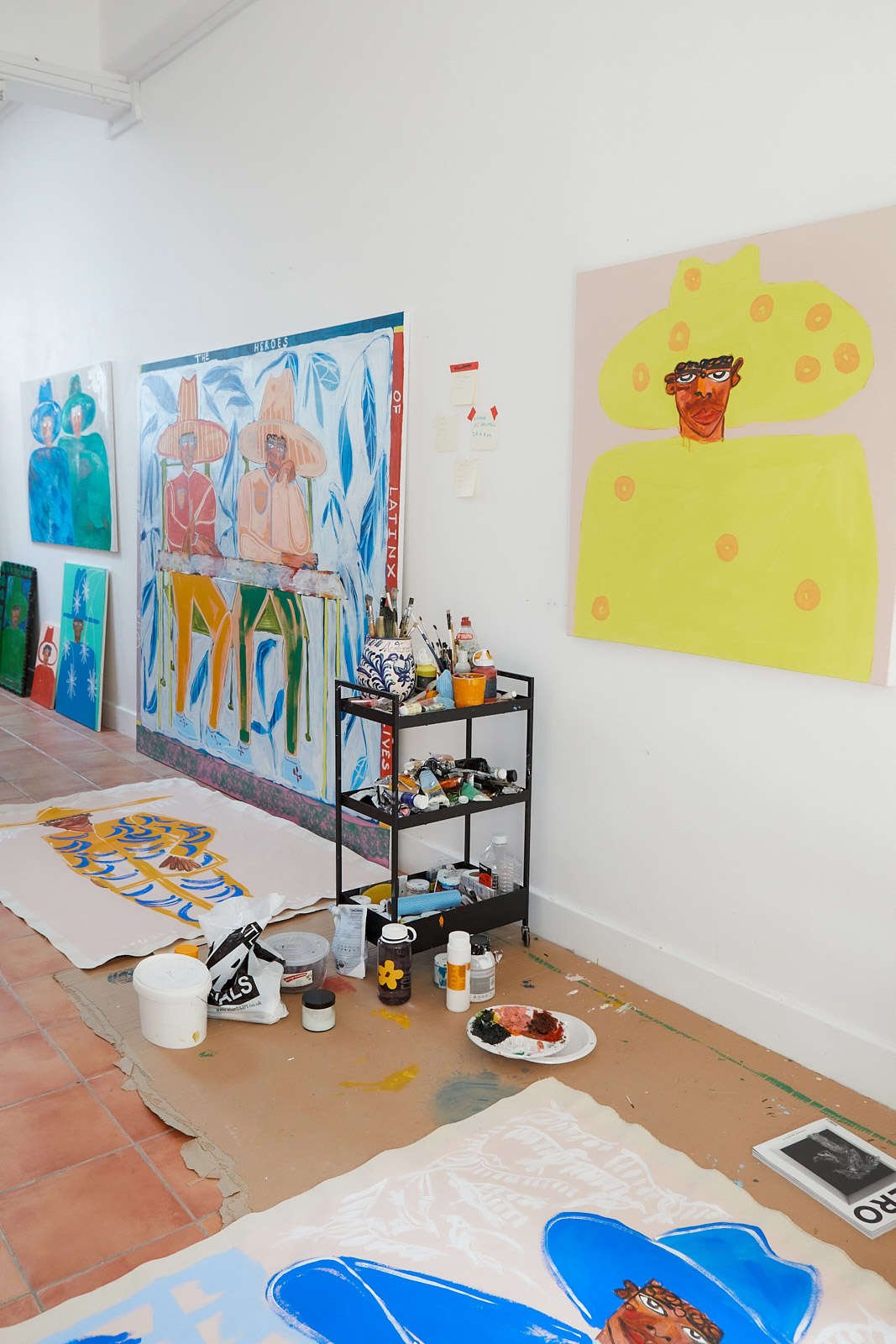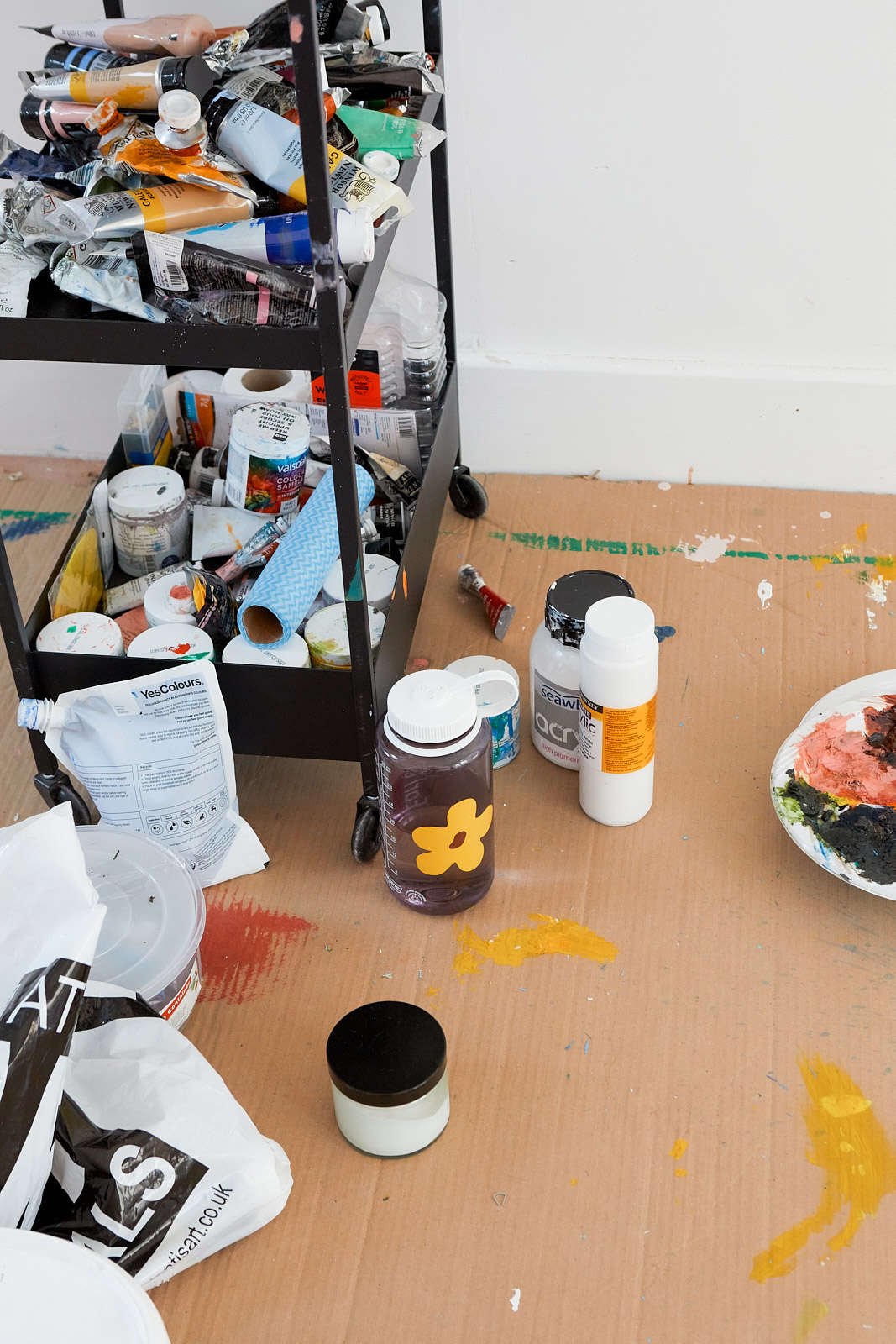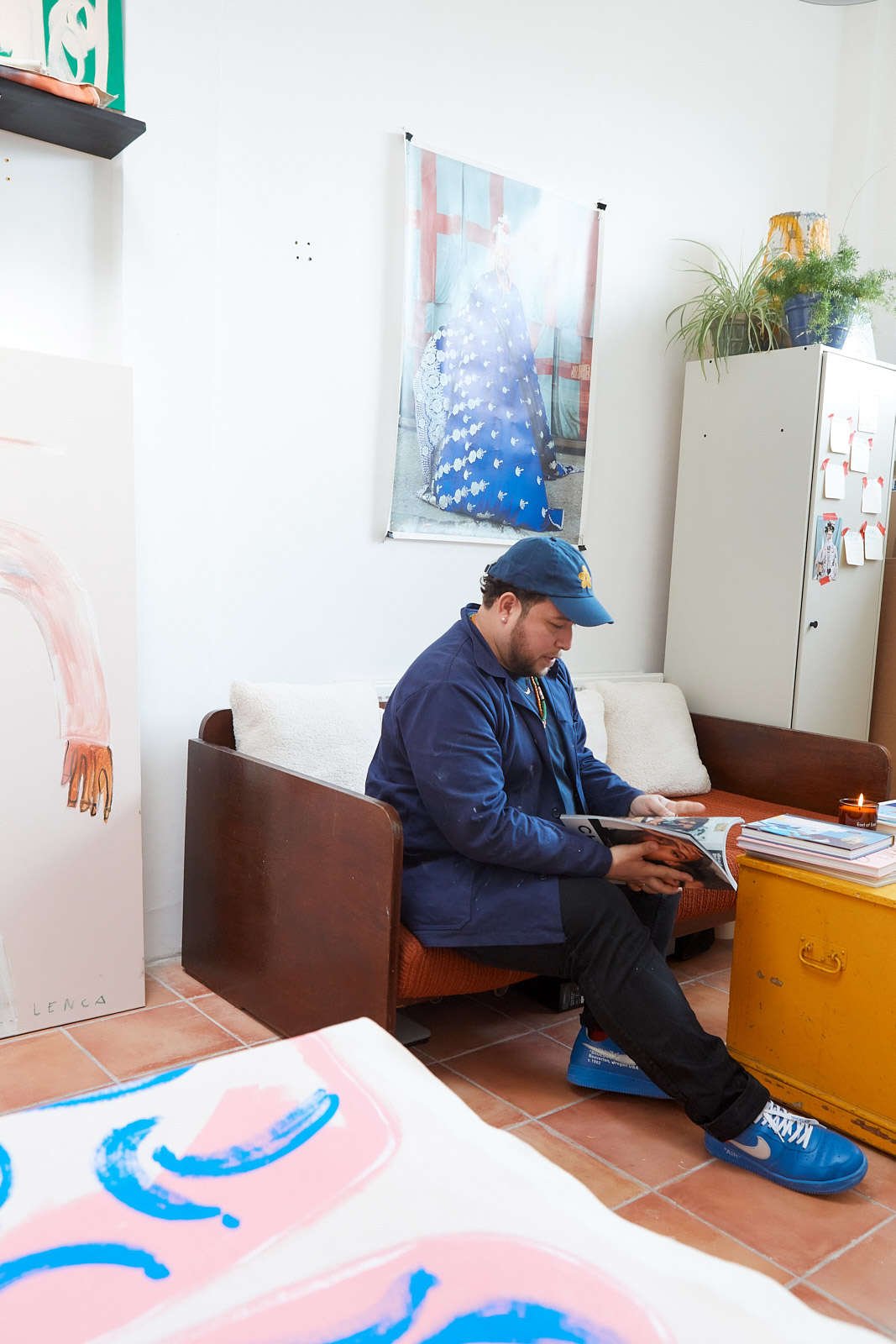Interviews
Artist Jose Campos of Studio Lenca
Painting, the influence of identity & the comfort of scent
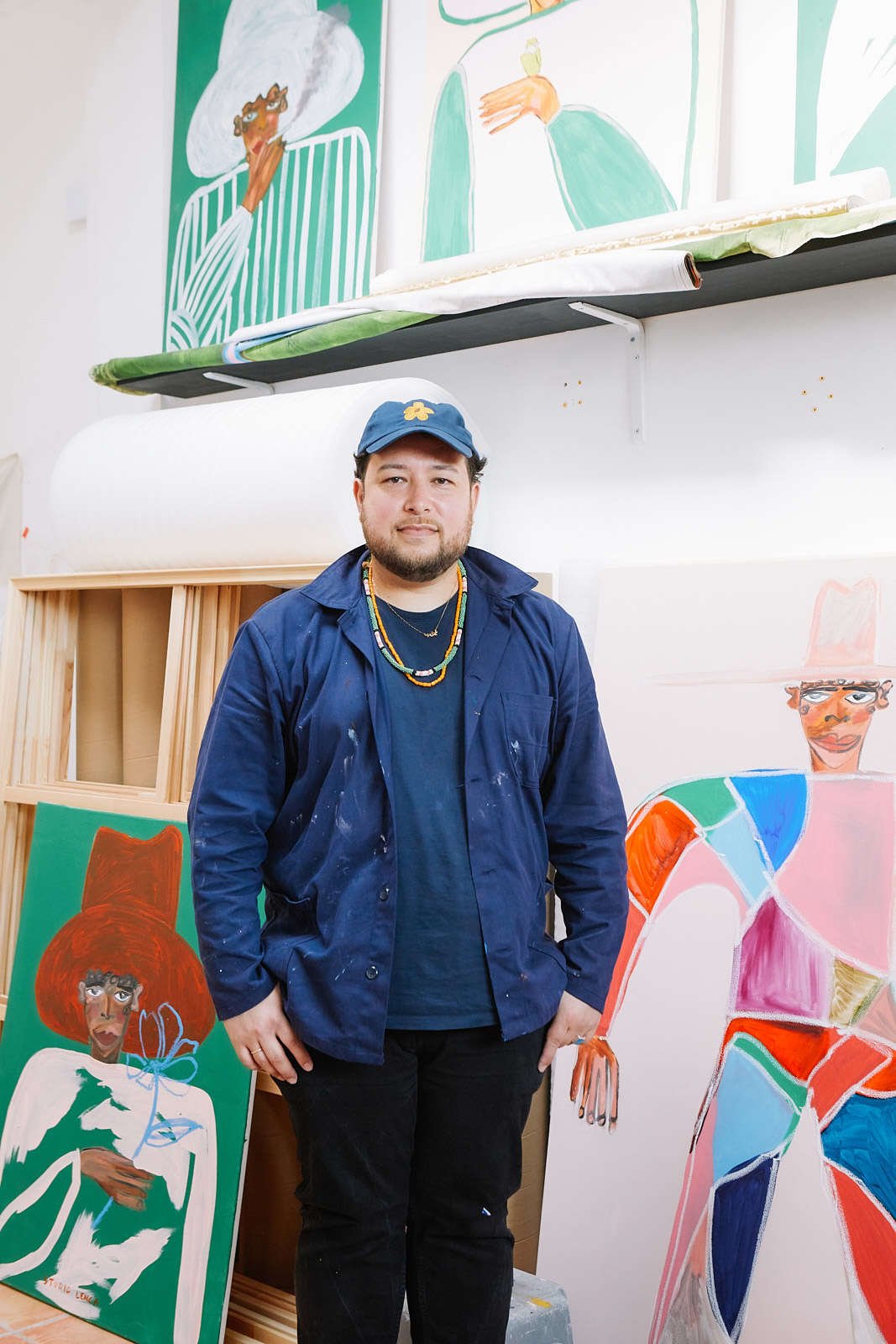
Earl of East Meets Studio Lenca
Meet Jose Campos, the name behind Studio Lenca. ‘Studio’ meaning the space for experimentation, and ‘Lenca’ referring to the Indigenous people of El Salvador. Having previously worked as an art teacher in London, Jose now works as a full time painter from his studio in Margate, a seaside town in the south of England.
We have been big admirers of Jose’s work for some time, so we were very happy to travel down to Margate and chat with him at his studio, take a walk by the sea, and eat at some great local spots.
What were the beginnings of Studio Lenca and how did you begin your practice?
Having worked as a secondary school art teacher in London I felt that in order to have a better work/life balance, I needed to make work. So, I started taking pictures of myself dressed as folkloric dancers of El Salvador and then that moved into painting and I became interested in portraiture. Then, the paintings sort of took on a life of their own.
Even now when I am painting, I always think of my experience as a teacher. Specifically, it is the ability that young people have when you present them with a brand new idea to jump into the unknown - that is something I try to embody in my own practice.
"Having people collect my work is a privilege. I feel like they take a part of me and my story into their homes."
@studiolenca
@studiolenca
Identity is an important theme in your work. How does this influence how you create your work and how has this evolved throughout your career?
Growing up in the US undocumented, I felt that I was living with a giant secret. Now I see that actually it is my superpower. I put that at the forefront because I know that other people are experiencing those feelings too. I find that my practice tackles different types of trauma that I have experienced, that my community has experienced, and also what I call intergenerational trauma.
Thinking about those experiences really propels the work that I do. I grew up helping my mother clean houses and I often think about that when I am using certain materials, like tablecloths. When I think about a collective trauma for example, I use these figures to make the Latin X queer experience visible. When I think about intergenerational trauma, I think about colonialism in the work and that sort of emerges with the photography work that I do. Having people collect my work is a privilege. I feel like they take a part of me and my story into their homes, especially when they give it to people as a gift. I feel like that is really powerful.
Thinking about those experiences really propels the work that I do. I grew up helping my mother clean houses and I often think about that when I am using certain materials, like tablecloths. When I think about a collective trauma for example, I use these figures to make the Latin X queer experience visible. When I think about intergenerational trauma, I think about colonialism in the work and that sort of emerges with the photography work that I do. Having people collect my work is a privilege. I feel like they take a part of me and my story into their homes, especially when they give it to people as a gift. I feel like that is really powerful.
What impact has your new Margate studio had on your workflow?
Margate is a space for opportunity, it also gives me the ability to connect with nature, especially the sea. After I have finished a day of working in the studio I just walk along the beach to my flat. That sense of space inspires me, and it also allows me to feel centered.
What does home mean to you? How do you create a home and a sense of place?
I always have the feeling that I’m an outsider and I guess that is my reality. That is sort of my home actually, it’s my comfort zone in a way. It’s really cheesy, but home is where the heart is, it’s where relationships are, the people that you love are, and that could be anywhere.
We often think that experiencing an artist’s studio is like stepping into their mind, do you have rituals that define work time from home time?
Every window in my apartment looks out onto the sea. I think the sea and the changing sky offer so much. I like to have it very minimal because it’s all about the nature in that space. In my actual home, I don’t have any of my paintings, they all live in my studio.
Everyday I wake up at 6am and start working in my studio from 8 till 5. I think that has come from teaching, but also this feeling of taking advantage of the day and being productive. When I paint I don’t feel like I am working, it is more like being, and thinking, and meditating. So it just feels like I’m engaging with the world. I feel like this is what I was meant to be doing, it just feels right, now I can breathe and it just makes sense.
Everyday I wake up at 6am and start working in my studio from 8 till 5. I think that has come from teaching, but also this feeling of taking advantage of the day and being productive. When I paint I don’t feel like I am working, it is more like being, and thinking, and meditating. So it just feels like I’m engaging with the world. I feel like this is what I was meant to be doing, it just feels right, now I can breathe and it just makes sense.
"I use scent in my studio more than I do at home. Scent is comforting, so I’m trying to create an environment in the studio that will allow me to be the best painter that I can be."
@studiolenca
@studiolenca
Does scent play an important role in your daily life?
Everyday when I get into my studio I light a candle. I really love woody and fig scents. It’s interesting because I use scent in my studio more than I do at home. I suppose it is because scent is comforting, so I’m trying to create an environment in the studio that will allow me to be the best painter that I can be.
What’s next for Studio Lenca?
I want to continue experimenting with different materials, I have been experimenting with collage. I have a few exhibitions coming up in places like Beirut and Dubai, and I have a show later on in the year in London.
Keep up to date with Studio Lenca here.
Scents for Studio Lenca
Jose told us he loves fig, so we had to recommend our Viagem scent. Inspired by a trip to Lisbon, Viagem is an uplifting blend of sweet coconut, green oregano and earthy vetiver to exhilarate the fig leaf within it. Try the room mist to instantly refresh your space.
For Jose's woody fix, we've recommended our sandalwood incense sticks. Finally, to compliment his seaside residence, we recommend our Strand scent which a light and refreshing blend of seaweed, mandarin and birch wood.
The Artist Edit
Earl of East Meets Tigris Li
